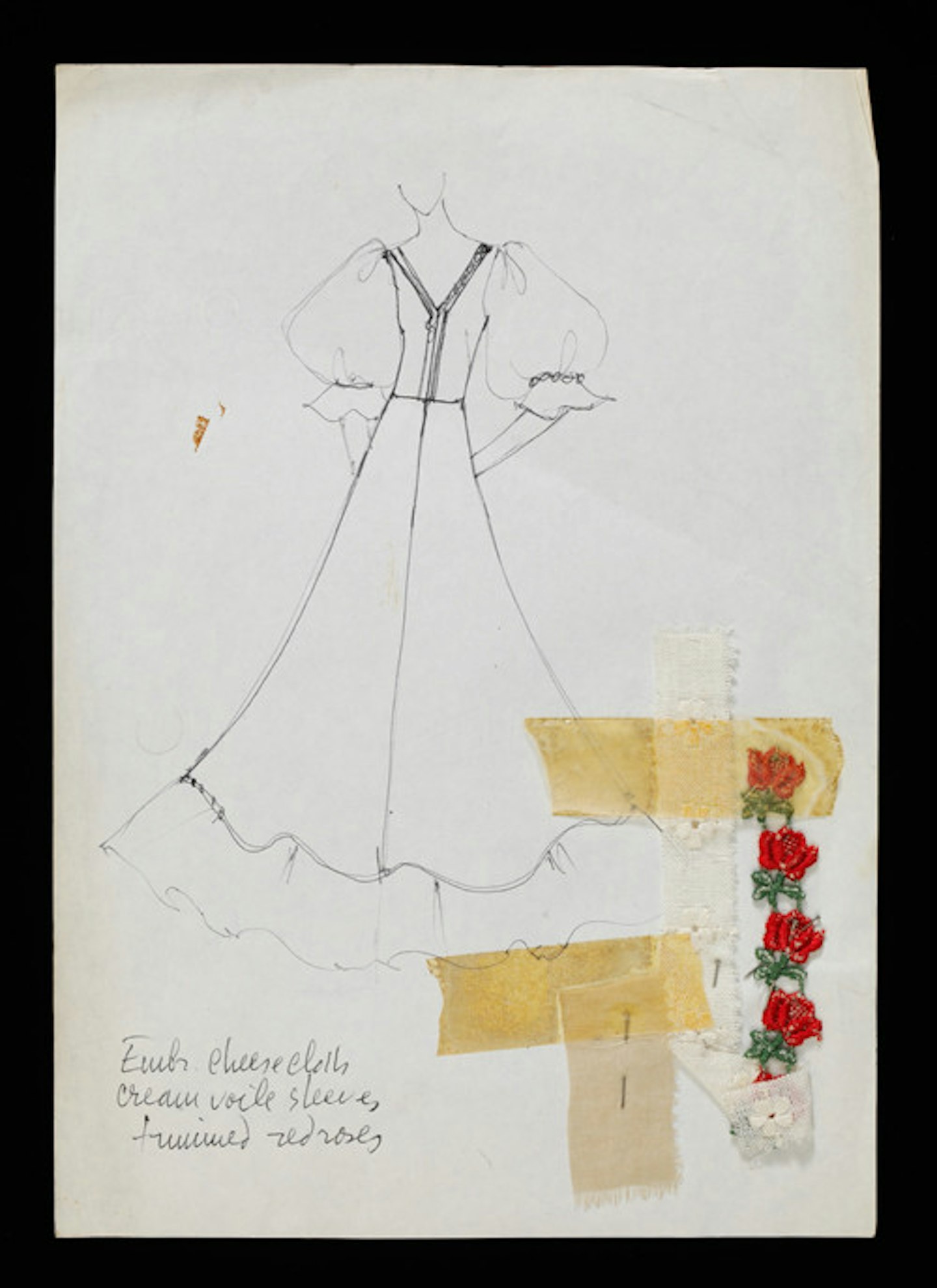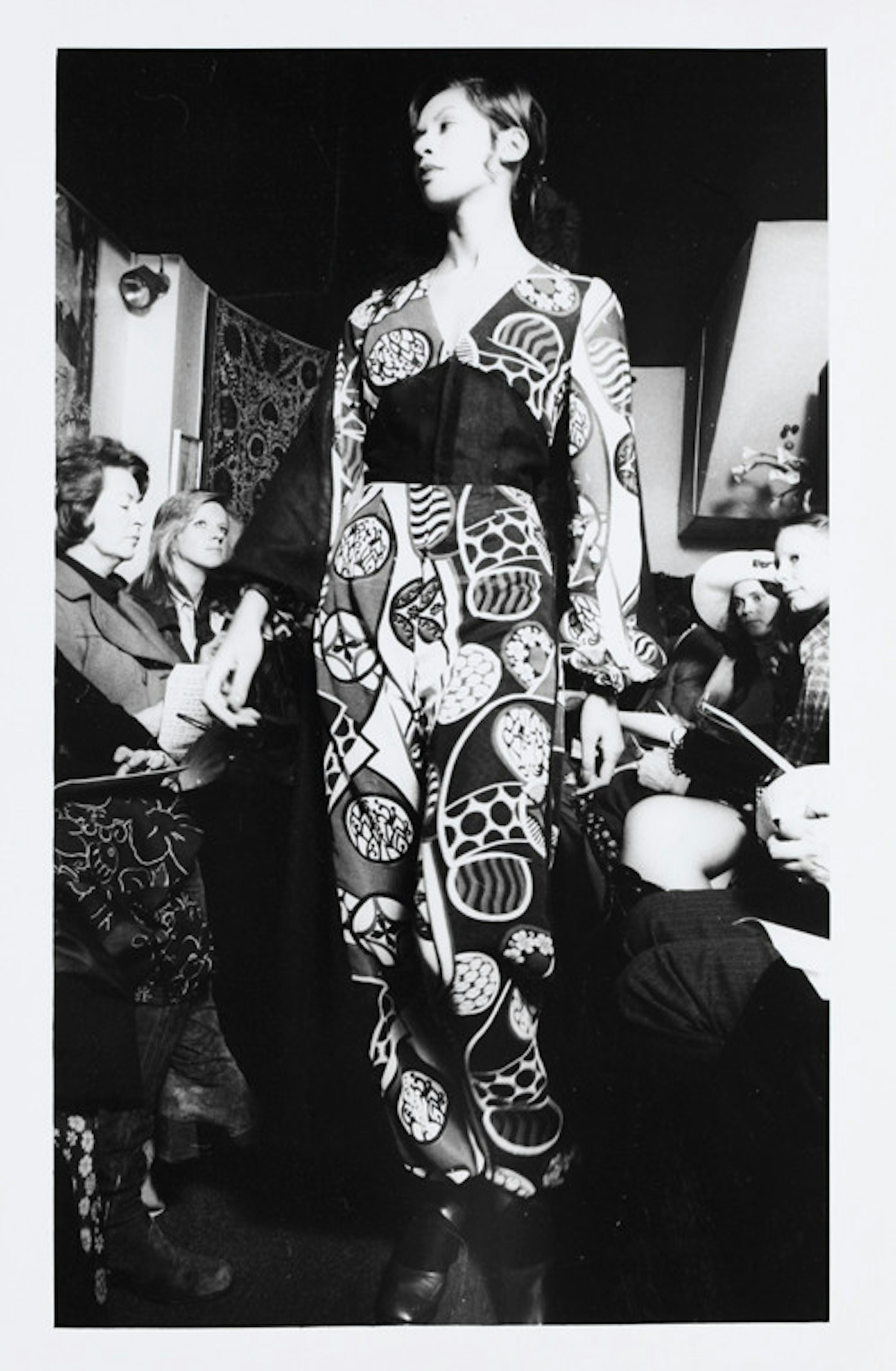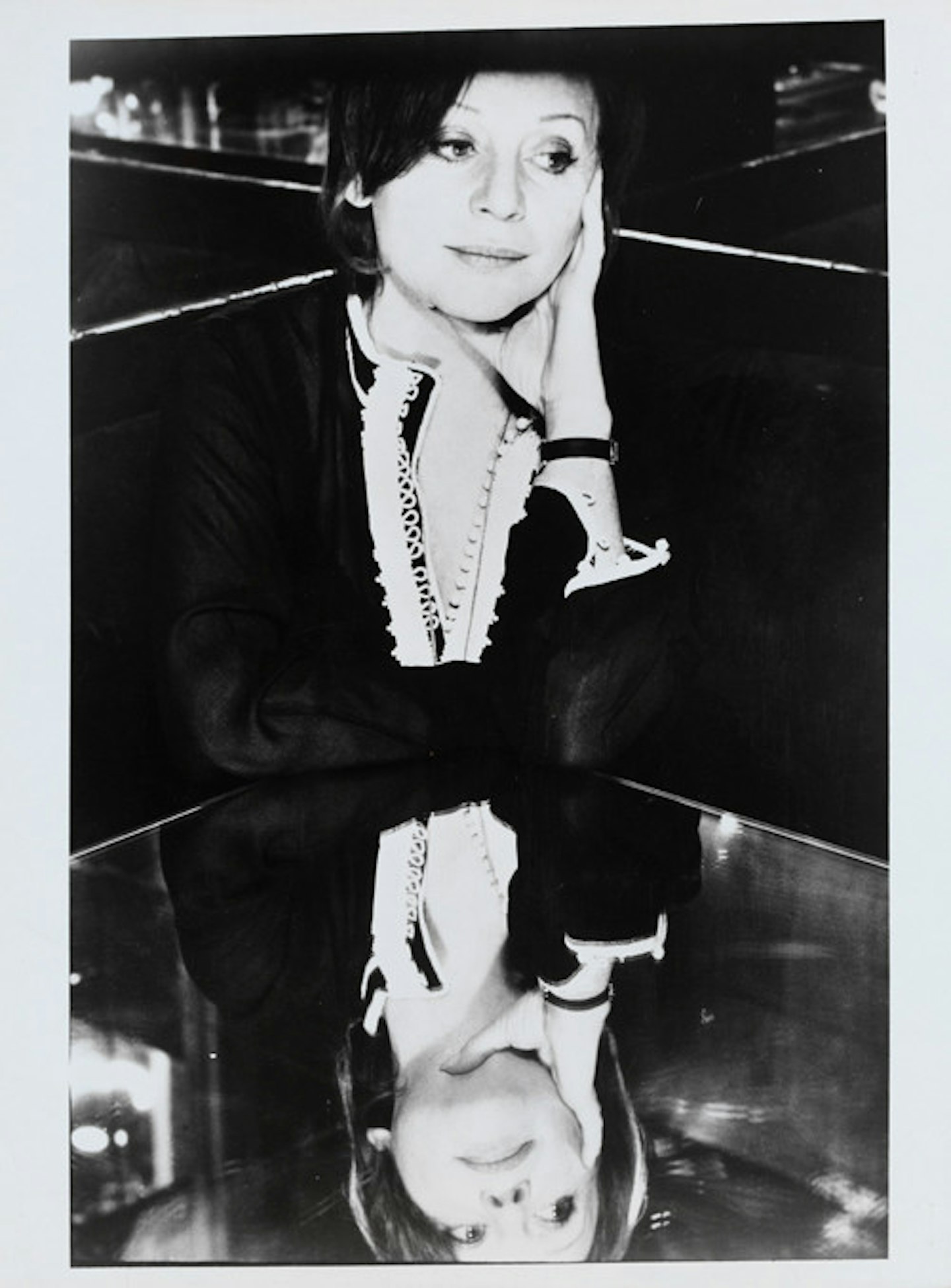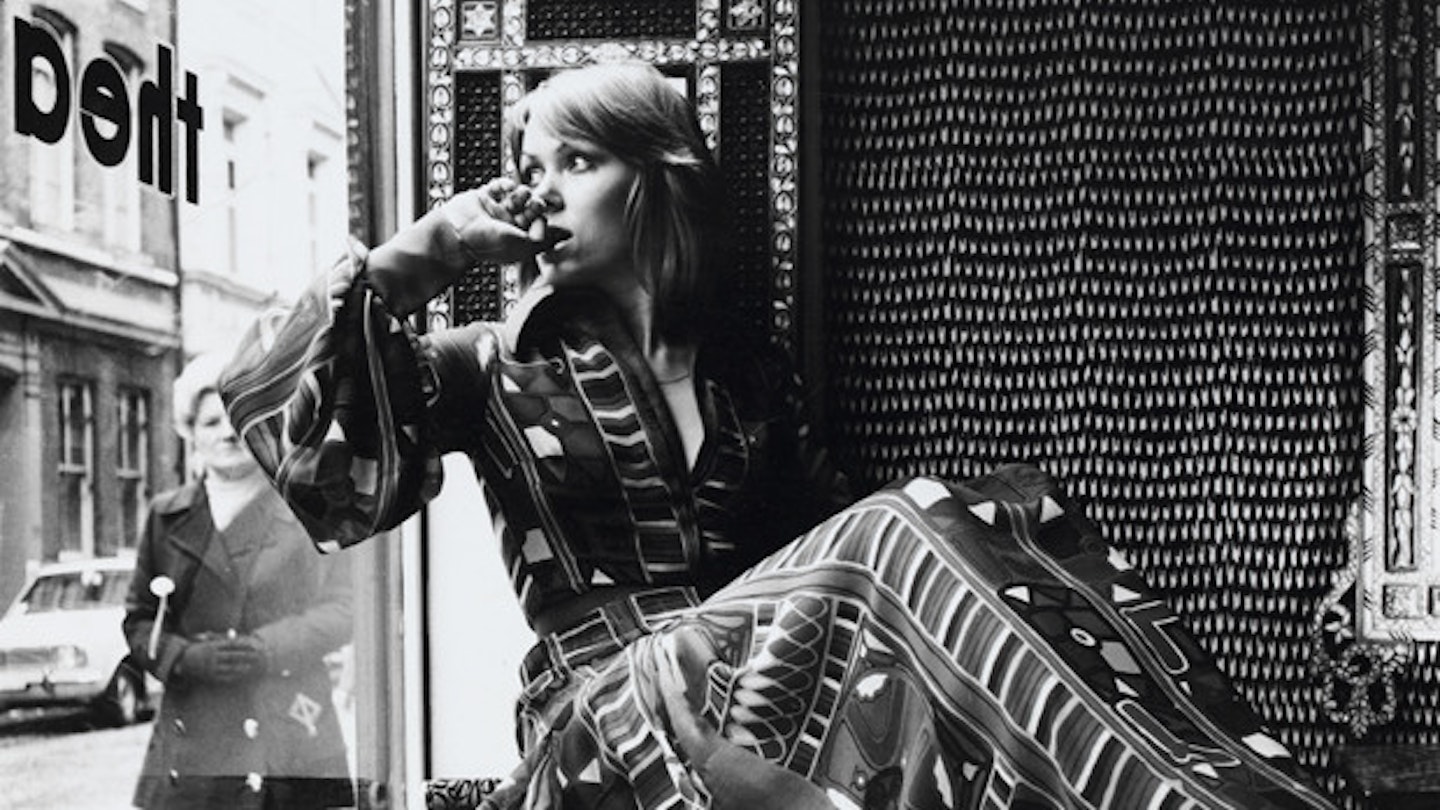It was the discovery of a fantastical Ossie Clark dress at a car boot sale which caused Laura McLaws-Helms to fall in love with 70s fashion, aged 12. 'I was always clothes-obsessed' she tells me as we sit among the gorgeously bohemian dresses in the new Thea Porter exhibition which she has guest curated, 'if I went missing, my parents knew to find me rifling through a closet'.
Laura went on to study for a Masters at FIT (the Fashion Institute of Technology in New York). For one assignment, she was tasked with designing her 'dream exhibition'. 'Ossie Clark and Bill Gibb had been done. I’d come across Thea’s name but soon realised there was so little information about her, so I began to do some more research'. After much digging around, Laura eventually came to London and met with Venetia Porter, Thea’s daughter. 'She had kept everything. For a fashion historian, it was a dream' says Laura who is dressed in one of Thea’s exquisite gold embroidered ‘Chazara’ jackets.

Five years later, the first ever exhibition of Thea’s workis opening today at the Fashion Textile Museum and a bookby Laura and Venetia has just been published. Thea Porter was born in Jerusalem and came to England for boarding school and university before returning to Damascus and Beirut where she led a glamorous life socialising with artists and diplomats before moving back to London in 1964. She began as an interior designer then moved into fashion as her British customers became captivated by the luxurious materials she imported from the Middle East. Her shop on Greek Street in Soho became a kind of rich person’s Biba where musicians (think, Pink Floyd, Mick Jagger), models and socialites would to come hang out, smoke, listen to Arabic music and, of course, have beautiful bespoke dresses, jackets, shirts and waistcoats designed and made for them by Thea and her bustling team of pattern cutters and dressmakers.

Thea’s reputation for making luxe-hippie fashion crossed to Europe and America and her clientele came to include Elizabeth Taylor, Barbara Streisand, Talitha Getty and Joan Collins; all major fashion muses in their own right. ‘I’ve interviewed women who have huge collections of couture especially made for them by Givenchy and Balenciaga’ Laura tells me, ‘yet they often said the clothes they felt most beautiful and most comfortable in were Thea’s. She knew how to create clothes for women which brought out their beauty.’
An excellent modern day case in point is that swooshing turquoise gypsy dress which Kate Moss wore the day before she married Jamie Hince, which was from Mossy’s extensive personal Thea Porter collection. The Olsen twins, Julia Roberts and Nicole Ritchie are also said to compete for anything by Porter when it comes up for sale on the collectors market.

“I have a small collection of Thea’s designs” says Laura, “I’ve had people follow me down the street to ask where they’re from. You feel so glamorous and beautiful when you wear them.” This may explain why there’s such a strong Thea Porter theme- and general 70s boho fabulousness- hitting shops right now for Spring/Summer. On the catwalks there were exquisitely decorative dresses at Etro, Valentino and Anna Sui which were reminiscent of Porter’s Gipsy and Faye styles. Sui has even sent some of her SS15 pieces to be displayed at the end of the exhibition to show how Porter’s influence lives on.
Laura explains her 70s obsession as being just as much about the culture and attitudes of the time as the clothes themselves. “There was a growing openness about sex, race and oppression so people felt like they were breaking new ground. It was the beginning of something. The age of aquarius” she muses. It may be an impossible dream to own your own piece of Thea Porter, but I heartily recommend a visit to FTM in a floaty hippie dress to imagine you’re in Thea’s dining room (which has been fully recreated) twirling to Lebanese music in a cloud of incense.
Like this? Then you might also be interested in...
Here's What Happened When We Put Poundland's New Gym Gear To The Test. Yep, They're All A Quid
Follow Bethan On Twitter: @BethanHolt
Pictures: Courtesy of the Venetia Porter collection / V&A Photographic Studio
This article originally appeared on The Debrief.
